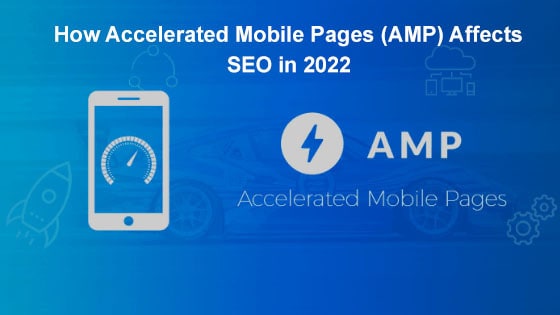SEO Friendly eCommerce Guide
7 Technical SEO Friendly ecommerce Tips To Keep Up With
Technical SEO, is one-third of the “big three” elements of SEO with the other two being on-page and off-page. Technical SEO can frequently seem like the most challenging aspect of SEO. This is in part due to its many moving parts as well as the need for a certain degree of competency and implementation of the code.
This difficulty is often compounded when dealing with e-commerce websites. However, it’s crucial to obtain competence in maintaining the technical health of your e-commerce SEO to ensure that the search engines properly crawl your site.
These are perhaps the top seven things you should be on top of in regards to your e-commerce website in 2022. Below is a 7 SEO friendly eCommerce tips to help you keep up with the latest strategies.
- Preventing Duplicate Content
Duplicate content, are pages that are the same except for the URL. It is often a huge problem when it comes to friendly e-commerce SEO due to the many filters that e-commerce stores typically have with their products. Choosing variations of product size, color, quantity, etc.; often times generates a new character within the pages URL string. Google will see this as duplicate content, and you will be able to see this when using a web scraper of your choosing.
Fixing this for a few reasons is essential. For one, it can have a negative impact on your website’s crawl rate and by extension, your websites rankings. The accumulation of thousands of useless pages generated from filters on your sites product pages means that Google is going to spend an inordinate amount of time crawling these useless pages instead of crawling the valuable pages you want to rank in the search results ultimately.
You can think of this as “cutting the fat” and making your website “leaner.”
You can fix this issue by blocking these pages from Google’s crawl via a disallow directive within the robots.txt file of your website or by applying a canonical tag towards the main URL.
Blocking duplicate pages is an essential part of friendly eCommerce SEO.
- Implement Schema Markup
Click-through rates weigh heavily when it comes to ranking factors, and being able to entice searchers to click on your page from the search engine results page (SERP) is particularly important when it comes to e-commerce. This is why you should be implementing schema markup, or “structured data”, to your product pages. A schema is nothing more than snippets of code placed on the backend of your product pages to incentivize searchers to click on your listing by giving them a “preview” of what’s on the page.
Doing this can dramatically increase your click-through rate, which will, in turn, increase your sites rankings. You can implement schema by using a plugin with your particular content management system or by getting a developer to do so.
Friendly eCommerce should always implement Schema Markup for the best results
- Establish proper site architecture
Establishing and maintaining well-structured site architecture not only provides a good user experience for its visitors but also makes your website a whole lot easier to crawl. This is particularly important for e-commerce websites, as you don’t want your most important pages (product pages) being a bunch of clicks away from the homepage. Ideally, the “deepest” parts of your website should be no more than four clicks away from the homepage. You want to establish a “flat architecture” across your website and make sure you are reinforcing the existing architecture by using keywords that you want to optimize your site for.
Establishing proper site architecture is key to any friendly eCommerce SEO.
- Optimize product images for search
One mistake people often make with their e-commerce sites is failing to optimize their product images. With the rise of image searches on Google, this is a mistake you can’t afford to make. This is particularly important if you operate in a competitive vertical and your product pages aren’t ranking well. When this happens, you have the opportunity to rank more competitively in the image searches for your products if you optimize and mark them up strategically. Make sure you track your image rankings with Google Search Console and always tune them for the SERPs.
A practical, friendly eCommerce SEO strategy will always optimize product images for search.
- Compress images for site speed
At the heart of the idea of establishing a good “user experience” is site speed. One of the number one killers of web rankings is less than stellar site speeds. If your website takes less than a few seconds to load, a significant percentage of your visitors will ultimately end up leaving which will have a negative impact on your rankings. Now many things affect site speed but the number one source of low site speed that e-commerce site owners face stems from uncompressed images. Since you are running an e-commerce site presumably with a lot of products, compression of your images should be of utmost importance. It is essential to use some compression tool to make sure your images are being compressed and that they aren’t dragging down your site’s performance.
Compressing images for site speed is the heart of any successful SEO friendly eCommerce guide.
- Eliminate Redirect Chains
Managing thousands of pages on your e-commerce website is a herculean task in itself and often leads to technical errors around specific directives either being overused or misused. Redirect chains, a situation that arises when you 301 redirect a page to a page that also has a 301 redirect, can quickly start accumulating when dealing with thousands of pages. This invariably leads to two vexing problems that have negative implications for your website. The first being that “link juice” won’t be adequately distributed throughout your site due to more of it being a loss with every successive redirect in the chain. The second being that it contributes to low overall site speed, taking longer for your pages to load.
You can eliminate redirect chains by identifying them using a scraper (e.g. screaming frog) and then handing it off to your developer to fix.
Eliminating redirect chains is essential for any beginners guide to e-commerce.
- Get Your Store Acquainted With AMP (Accelerated Mobile Pages)
Most of the visitors to your store are going to be on mobile devices, and this percentage is only going to increase in the future. With that being said, it is crucial to optimize your store from a mobile point-of-view. This entails making sure it loads fast enough on mobile and delivers a pleasant user experience. Setting your store up with AMP can help you achieve this. AMP allows site owners to provide bare, stripped down versions of their pages, drastically cutting down on the load times of pages. You want to make sure that you have the most important pages of your e-commerce site (home page, product pages, category pages, etc.) integrated with AMP.
What Did We Learn?
Eliminating duplicate pages, implementing schema markup, establishing proper site infrastructure, optimizing product images for search, compressing images for site speed, removing redirect chains, and getting your store acquainted with AMP are all things you need to be aware of for your ecommerce website in 2022. Following this SEO friendly eCommerce guide is the best way to yield lasting results for your eCommerce website.



